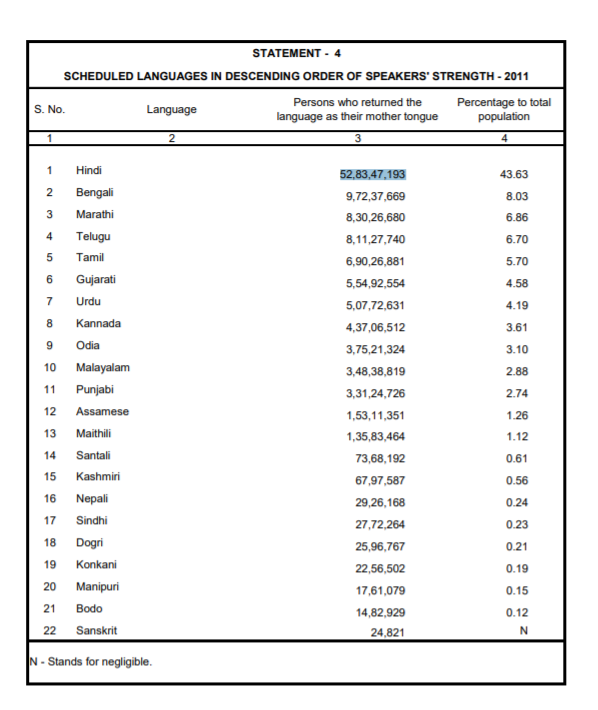Whenever anyone talks about the key characteristics of India, the country’s diversity comes up for special mention. Yes, there might be very few countries out there, if at all, that are as diverse as India. These differences are social, linguistic, regional, cultural, religious, economic, and more. In this article series, read about the importance of Indian languages, and why translating from and into these languages is such an important business move.
The rich demographic mixture of India can be gauged from the fact that it has 29 states and 7 union territories. Each state has its own commonly spoken language, and the spoken dialect of the language can change every hundred kilometres.
But this change is not limited to language alone; there are also cultural differences between people living in one part of the State with those living in another part of the same State. There are cases wherein these differences are pronounced, especially when it comes to eating habits, dressing sense, and more. This impacts consumer behaviour and buying choices.
The varied nature of India’s demographics also results in a wide array of expectations of people. Businesses, who want to succeed in India, need to micromanage these expectations.
Language Diversity in India
According to the Census of India (2011), there are 121 languages spoken across India. Out of these, 22 are scheduled languages, which can be given official status by respective states or be used to conduct administrative work or used in the state legislature; the remaining 99 languages have the status of non-scheduled languages. The two official languages of India (federal government) are Hindi and English, while the states have the authority to designate their own official language.
But don’t allow these definitions to confuse you. The point we are trying to make here is the massive levels of linguistic diversity in India. 14 of these scheduled languages have more than 10 million speakers each. To put this figure into perspective, the population of some countries, e.g. Norway, is much less than 10 million.
There are some other linguistic statistics that will have you sitting up and taking notice. There are around 528 million Hindi speakers, while there are 3 million speakers of Odiya and 1.4 million speakers of Bodo. This is just a cross-section of statistics to give you an idea of the number of speakers of different languages.
Bodo has one of the least numbers of speakers from amongst the 22 scheduled languages, and yet there are 1.4 million people who speak Bodo!
Commonly Spoken Languages
The numbers of people who consider Hindi their mother tongue (a language a person is proficient in because he/she has been speaking the language since early childhood) make up around 43% of the population.
Bengali comes a distant second when it comes to speaker strength, with around 9 million speakers. This is closely followed by Marathi, Telugu, and Tamil with 8.3, 8.1 and 6.9 million speakers each.

There is another language that is commonly spoken in India – English. Around 12% of the Indian population speaks English. This figure is important because it is also the official language of business for the Central Government, along with Hindi. While this figure might or might not seem significant, there is absolutely no doubt that India has one of the biggest English-speaking populations in the world, and the figure will increase in the future.
With the increase in demand for English communication skills in India, successive governments both at the Central and State level are emphasising the need to teach English, right from the beginning, which is from kindergarten. Bear in mind that the private schools are already doing this, but the pressure is now on Government schools to start doing the same.
The Language of Business in India
The linguistic diversity in India also impacts the language of business in India. While there is no doubt that languages like Hindi and English are widely regarded as the language of business in India, there are businesses that choose to localise their messaging based on the region and the commonly spoken language in that region.
Let’s say your business wants to set up operations in India, and you need to comply with certain rules and regulations put in place by the Central Government, as well as, adhere to specific State-centric policies. For the former, you will need to interact with central government officials who will be conversant in English and Hindi and who will expect that you communicate with them in English.
Even in your interactions with State governments, you can conduct your business in English. Still, if your company and its people can converse with the State government officials in their local language, it will help break the ice. This is a big plus.
This is possible if you hire locals to work for you, who are proficient in the language commonly spoken in the State. But what do you do when you want to sell your products or services to your target audience? The number of languages spoken across India means you have your task cut out for you. You will need to define your target demographic and list their traits, primarily the language they can understand.
If you know a large percentage of your target audience can understand English, it makes sense to promote your products or services in English. However, if you think they understand a regional language like Bengali, Marathi or Tamil, you need to localise all your promotional content in that particular language. Otherwise, you might not be able to turn them into your customers.
Typically, it makes sense to say that India is a market that can only be conquered with localisation. While solid market research will give you an idea about which languages people are using to consume products and services information, it still makes sense to adopt a horses for courses approach.
So, if you are targeting the Tamil Nadu market, you must localise your messaging in Tamil; if you want to make a mark in Marathi speaking regions, you must target your audience in Marathi and so on.
Understanding Diversity from a Business Perspective
A business needs to command trust and loyalty from its target consumers. If you are a business, and want to succeed in India, this trust and loyalty come at a premium.
One way of doing this is by localising product and service messaging and key business communication in the regional language of choice. This not only helps convey the message in a more impactful manner but also ensures that a particular business process or activity is managed more efficiently.
But localisation in India isn’t just limited to understanding the language, but also gaining a cultural understanding that comes with it. In India, language is an integral part of the culture of a region and the interests and preferences that come along with it. By focusing on language localisation, businesses can also understand the culture better, thus ensuring that their messaging also keeps cultural sensitivities in mind. This drives trust and loyalty.
Conclusion
There is probably no other country in the world that is as linguistically diverse as India. An astounding 19,500 languages or dialects are spoken as mother tongues. As can be imagined, this has a huge influence on businesses and how they reach out to audiences. An understanding of this critical demographic aspect helps them understand the benefits of language translation to achieve success.


